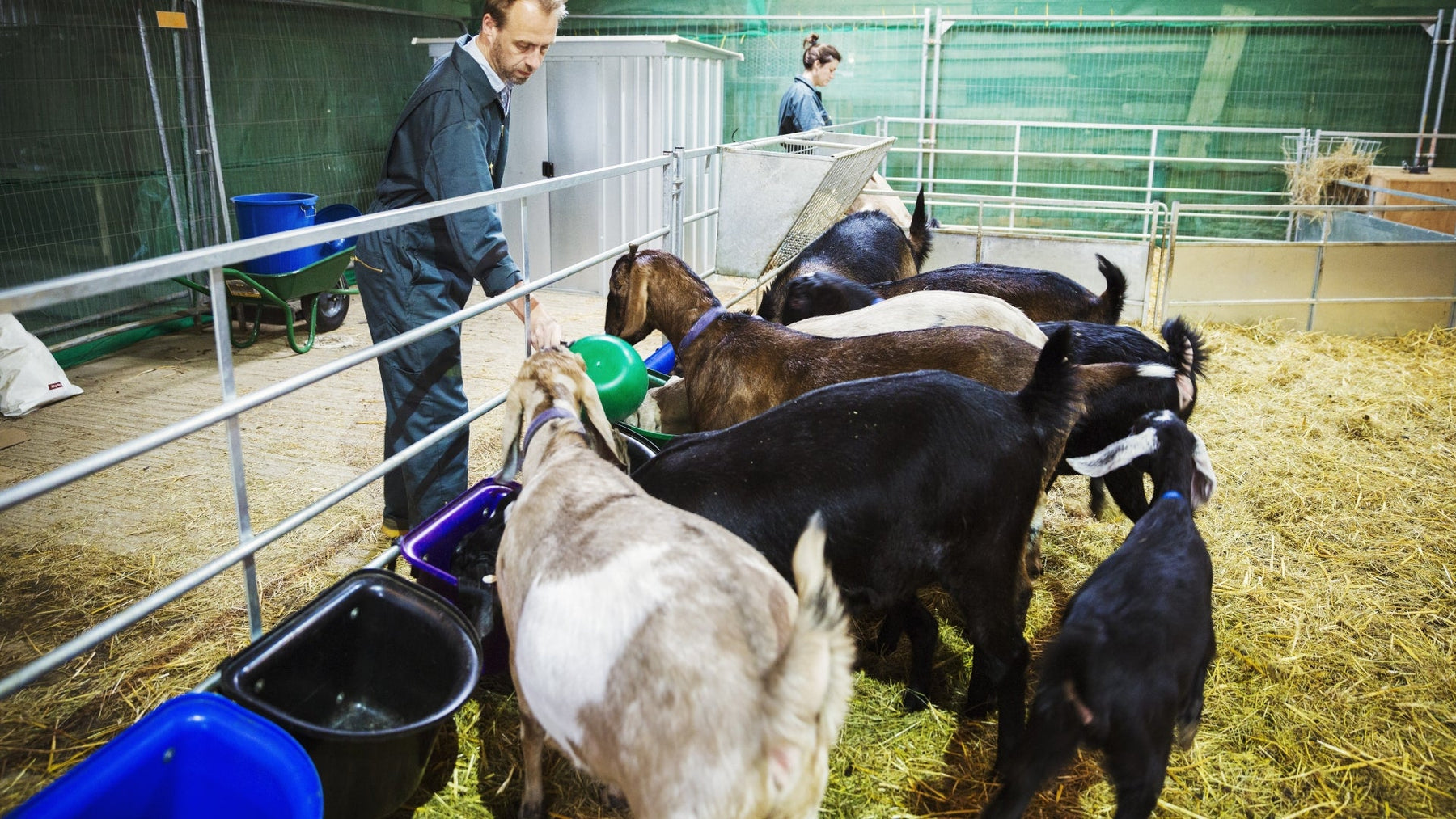
Cattle Scale Guide 2025: Expert Tips for Accurate Weight Tracking & Safety
Imagine losing hundreds or even thousands of dollars annually due to inaccurate livestock weight measurements. In the competitive world of cattle farming, even a small error in tracking growth rates or market readiness can significantly impact your bottom line. An effectively used cattle scale isn't just equipment; it's a strategic tool that directly influences your herd's health, profitability, and operational efficiency.
This comprehensive guide will equip you with the knowledge to maximize your cattle weight scale, from selection and calibration to safe handling and leveraging modern technology, ensuring precision in every reading.
The Cornerstone of Profitable Livestock Management
Precise weight monitoring is fundamental to effective livestock management. Whether you're monitoring growth, optimizing feed conversion, or timing sales for peak profit, reliable data from a livestock scale empowers you to make informed decisions. Beyond financial gains, precise weighing helps you:
-
Assess animal health: Early detection of illness through sudden weight changes.
-
Optimize feeding programs: Customize feed plans to cut down on waste and boost efficiency.
-
Monitor genetic progress: Identify high-performing animals for breeding.
-
Ensure market readiness: Sell animals at their ideal weight for maximum return.
Ignoring accurate weighing is akin to navigating without a compass – you might get there, but it will be inefficient and costly.
Mastering Your Cattle Weight Scale
To truly harness the power of your cattle scale, several crucial aspects demand your attention.
1. Choosing the Right Cattle Scale and Embracing Technology
The journey to accurate weighing begins with selecting the appropriate scale for your operation, and in today's world, that often means considering advanced features.
-
Capacity & Size: Ensure the scale can comfortably handle your largest animals without overcrowding.
-
Durability: Look for robust construction that withstands harsh farm environments, including moisture and animal impact.
-
Portability vs. Permanent: Decide if you need a mobile scale for various locations or a fixed installation for a central weighing station.
-
Modern Features: Look for scales with:
-
Wireless Connectivity (Bluetooth/Wi-Fi): Allows for data transfer directly to smartphones, tablets, or computers, eliminating manual transcription errors.
-
Data Logging Capabilities: Stores weight records directly on the scale or a connected device.
-
Integration with Herd Management Software: Seamlessly syncs weight data with popular livestock management platforms for comprehensive record-keeping and analysis.
-
"Hold" Function: It steadies the weight display, even with minor animal shifts, for precise results.
-
Rechargeable Batteries: For portable units, ensuring reliability in the field.
2. Proper Scale Placement and Calibration
The foundation of accurate weighing rests on meticulous setup and consistent calibration.
-
Level Surface: Make sure to set up your cattle scale on a solid, completely flat surface. Just a small tilt can cause major inaccuracies and make it unstable. Use shims if necessary to achieve true level.
-
Stable Environment: Locate the scale in an area free from excessive wind, vibrations, or direct sunlight (which can affect electronic components).
-
Regular Calibration: This is non-negotiable for accuracy. Calibrate your scale frequently using certified test weights. Follow the manufacturer's specific instructions. A good rule of thumb is to calibrate monthly, after moving the scale, or if you suspect any discrepancies. Keep calibration records for auditing.
3. Preparing the Cattle for Weighing
Minimizing stress and ensuring calm animals are paramount for both accuracy and safety.
-
Acclimatization: If possible, allow cattle to become accustomed to the scale area through positive exposure before actual weighing sessions.
-
Calm Handling: Gently and calmly guide cattle onto the scale. Avoid shouting, prodding, or making sudden movements that can agitate them. A calm animal will stand still, providing a more stable reading.
-
Single File: Always weigh animals individually. Multiple animals on the scale will provide a combined, inaccurate reading.
-
Consistent Conditions: For the most comparable data, aim to weigh animals at roughly the same time of day, ideally before feeding (minimizing variations due to gut fill).
4. Safety Considerations When Using Cattle Scales
Working with large animals carries inherent risks. Implementing strict safety protocols is critical for both handlers and animals.
-
Facility Design: Ensure your working chutes, alleys, and scale pens are robust, well-maintained, and designed to safely guide cattle with minimal stress. Non-slip surfaces are crucial on the scale platform and in approach areas.
-
Personal Protective Equipment (PPE): Make sure you're always wearing suitable farm clothing, like strong, closed-toe boots (steel-toed are best), and gloves. Eye protection may be necessary in dusty conditions.
-
Awareness of Animal Behavior: Understand cattle flight zones and blind spots. Approach animals calmly and predictably. Avoid startling them. Recognize signs of agitation (e.g., head up, pawing ground, snorting).
-
Maintain Clear Escape Routes: Always know where your escape routes are when working in confined spaces with cattle. Ensure you're never in a spot where you risk being crushed or stuck.
-
Work with a Partner: When possible, have at least two people present during weighing. One can handle the cattle, while the other manages the scale and records data, enhancing both efficiency and safety.
-
Proper Lighting: Ensure the weighing area is well-lit, reducing shadows that might spook animals and improving visibility for handlers.
-
Emergency Plan: Have a plan in place for emergencies, including how to handle an animal that falls or becomes trapped on the scale.
5. The Weighing Process
Once the animal is safely on the scale, focus on obtaining a stable reading.
-
Stable Position: Wait for the animal to stand as still as possible on the scale. Utilize the scale's "hold" function to capture a stable weight despite minor movements.
-
Record Immediately: As soon as a stable weight is displayed, record it accurately using your preferred method – whether manual logging, a digital device, or integrated software.
-
Consistency: Strive for consistent weighing conditions each time to ensure data comparability over time.
6. Data Management and Analysis
Collecting data is only the first step; deriving actionable insights is where the real value lies.
-
Organized Records: Maintain detailed records for each animal, including weight, date, and any relevant notes (e.g., feed changes, health events). Modern software can greatly simplify this.
-
Tracking Trends: Regularly analyze individual and herd weight trends. Look for deviations that might indicate health issues or feeding inefficiencies.
-
Actionable Insights: Use the data to make informed decisions about culling, breeding, feed adjustments, medication dosages, and optimal market timing.
Conclusion
An effectively utilized cattle scale, backed by robust safety protocols and integrated technology, is an indispensable asset for any livestock operation. By meticulously selecting the right equipment, ensuring proper setup and calibration, prioritizing the safety of both animals and handlers, and leveraging modern data management tools, you can ensure accurate weight tracking.
This precision directly translates to improved animal health, optimized resource utilization, and ultimately, a more profitable and sustainable farming enterprise.
Ready to upgrade your cattle weighing operation? Liberty Scale offers expert consultation and premium livestock scales designed for accurate weight tracking and enhanced safety. Contact us now for further details.
FAQs
How often should I weigh my cattle for optimal management?
The frequency depends on your goals. For tracking growth and feed efficiency, weighing every 2-4 weeks is common. For specific health interventions, before marketing, or for breeding stock, more frequent weighing may be necessary.
Can modern cattle scales integrate with my existing herd management software?
Many modern cattle scales offer wireless connectivity (Bluetooth, Wi-Fi) specifically designed for seamless integration with popular herd management software, allowing for automatic data transfer and comprehensive record-keeping. Always check compatibility before purchasing.
What are the most common causes of inaccurate cattle scale readings?
The most frequent culprits include an unlevel weighing surface, lack of regular calibration, animal movement during weighing, debris under the scale, and damaged load cells or electronics.
What are the key safety considerations when weighing large animals?
Key safety measures include using properly designed and maintained chutes/pens, always being aware of cattle behavior and flight zones, wearing appropriate PPE (e.g., steel-toed boots), ensuring clear escape routes, and ideally working with a partner.
